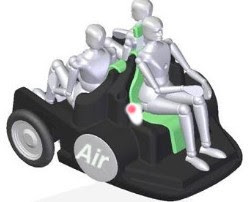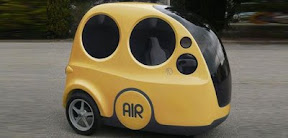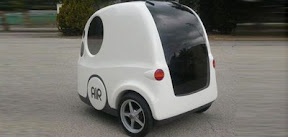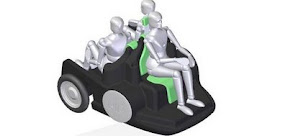xia ku cao 夏枯草
by: Joe Hing kwok Chu 朱興國編譯
Present day Application:
-
Hypertension and arteriosclerosis: xia ku cao 1000 g, boil and make extract, strain. Repeat 3 times. Mix the 3 batches of extract. Add some honey. Boil and reduce into paste. Store in refrigerator. Take 1 spoon, twice a day with warm boiled water. This therapy can maintain the blood pressure in normal range. Animal studies showed that xia ku cao can slow down the formation arterial sclerosis, lowered blood lipids, and had good result in treating cardiovascular diseases. [1]
-
Acute tonsillitis: for acute infection: xia ku cao 30 ~ 60 g, boil and make extract. Strain. Repeat 2 times. Mix the extract. Use it in one day. Sip slowly so that the liquid can stay in the throat longer to contact the affect area.
-
Amnesia: xia ku cao 15 g, ban xia 12 g. Make into decoction. One dose a day for 10 day.
-
Whooping cough: xia ku cao 15 g, san bai pi 10 g, huang qin 9 g, di gu pi 9 g, pi pa ye 10 g, cha di long 9 g, jiang can 10 g. gan cao 3 g. Make into decoction. One dose a day.
-
Coughing blood due to TB of the lungs and bronchial dilation
-
Chronic headache: xia ku cao, ge gen, make into decoction.
| Pharmaceutical name:英 文藥名﹕ | Spica Prunellae Vulgaris |
| Latin botanical name:拉丁文學名﹕ | Prunella vulgaris Linn. |
| Pron. in Japanese: 日語發音﹕ | kagoso |
| Pron. in Korean: 韓語發音﹕ | hagocho |
| Pron. in Cantonese: 粵音﹕ | ha ku cho |
| Other Names: | bang chui cao, tie she cao, da tou hua, xia ku tou 棒槌草、鐵色草、大頭花、夏枯頭 なし |
| Common Name: 英文名﹕ | Common Selfheal |
| Distribution: 產地﹕ | Mainly in Jiangsu, Anhui, Henan and throughout China. 主產於﹕ 江蘇﹐ 安徽﹐ 河南。分佈於全中國 各地。 |
| Properties (characteristics)﹕ 性味﹕ | acrid, bitter, slightly cold 辛﹐苦﹐微寒 |
| Channels (meridians) entered: 歸經﹕ | liver, gall bladder. 入肝﹐膽二經。 |
| Actions & Indications:用 途﹕ | goiter
|
| Medical functions: 藥理﹕ |
藥理﹕
|
| Chemical ingredients:化 學成份﹕ | to be loaded |
| Dosage: 用量﹕ | 9 to 15 g, or up to 30 g when used by itself. |
| Samples of formulae:處方舉例﹕ | Acute infectious kerato-conjunctivitis: use xia ku cao 15 g, ju hua 15 g, pu gong ying 30 g. Make into decoction and use as tea. 肝火旺而引起的目赤腫痛 (急性結膜炎、流行性角膜炎) 用夏枯草五錢、菊花五錢、蒲公 英一兩,水煎服 |
| Modern Research: 現代研究﹕ | Anti-cancer (article in Chinese and English) |
| Cautions: 禁忌﹕
| use caution in cases of Decoction of xia ku cao can raise the value of |
1.防治高 血壓及動脈粥樣硬化
中國中醫研究院廣安門醫院陳鼎祺,讓肝陽上亢型高血壓病患者用夏枯草1000克,煎3次去渣,加適量蜂蜜熬成膏,放冰箱內冷藏,每天早晚各服1匙,溫開水送服,使其血壓能持久穩定於正常范圍。動物實驗表明夏枯草能延緩主動脈中粥樣斑塊的形成,對降血脂、治療冠心病動脈硬化有良好功效。
2.治療急性扁桃體炎
取夏枯草苦寒之性以清熱毒,取其辛味以發散風熱,消散郁結,用於治療風熱邪毒搏結於咽喉所致的急性扁桃腺炎。臨床以夏枯草30-60克 ,水煎2次,混合藥液後一日內頻頻服完,服時徐徐咽下,以延長藥液在咽部的滯留時間,使藥直接作用於病灶處,有很好的作用。
3.治失眠
治精神萎靡,夜難入眠,甚則通宵達旦,心煩易怒,易驚易夢,舌質紅,脈細數。証屬郁火內擾,陽不交陰之候。藥用夏枯草15克、半夏12克 ,水煎服,日1劑,連服10劑。
4.治療百日咳
百日咳臨床症狀以痙攣性咳嗽為主症,咳時涕淚皆出,滿面通紅,似肝火刑肺之咳狀。夏枯草清肝熱,泄肝火,平肝氣,疏通氣結,使肺金不受其刑。治法以夏枯草15克、桑白皮10克、黃 芩9克、地骨皮 9克、枇杷葉10克、炒地龍9克、僵蠶10克、甘 草3克,水煎服,日1劑,治療小兒百日咳,可獲良效。
5.治療肺結核、支氣管擴張之頑固性咯血
用夏枯草30克、百部20克、黃 芩12克、杏仁12克、代赭石12克,治療久治不愈之咯血。
6.治頑固性頭痛
夏枯草配葛根,升降結合治頭痛。巔頂及項後風池處,皆肝膽經循行之處。夏枯草清肝膽,使循經上炎之郁火直折,還可起引經作用,引諸藥直達 病所,配葛根升發清陽,止痛解肌,可使頑固性頭痛沉疴痊愈。
Scrofula : A form of tuberculosis affecting the lymph nodes, especially of the neck, that is most common in children and is usually spread by unpasteurized milk from infected cows. Also called struma. (Source: American Heritage Dictionary)
[1] 中國中醫研究院廣安門医院陳鼎祺













